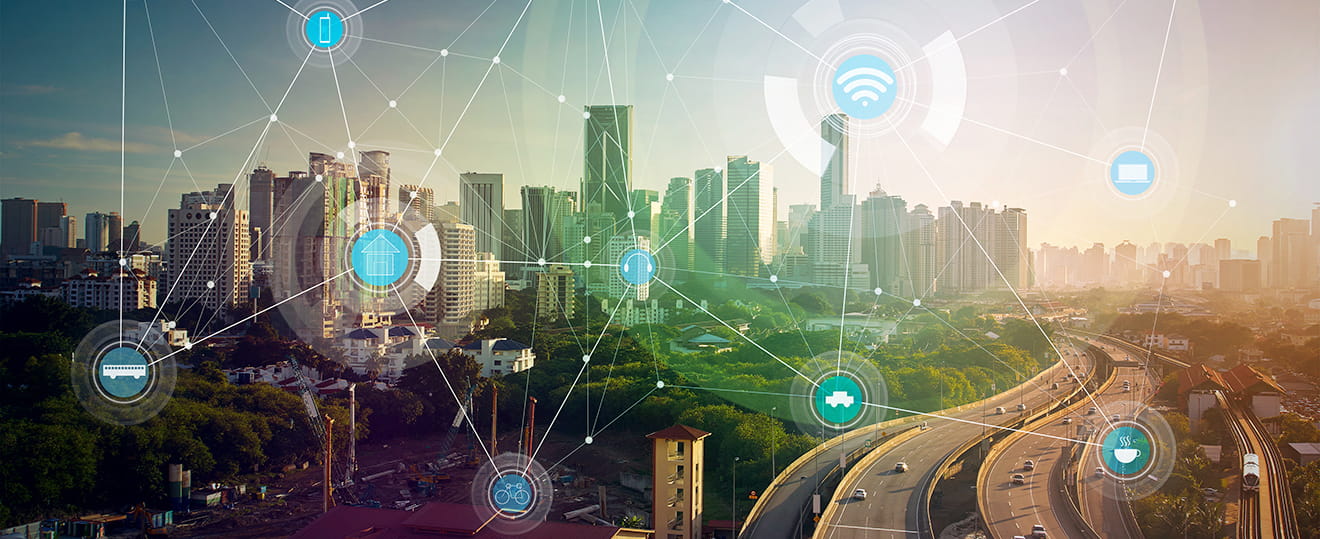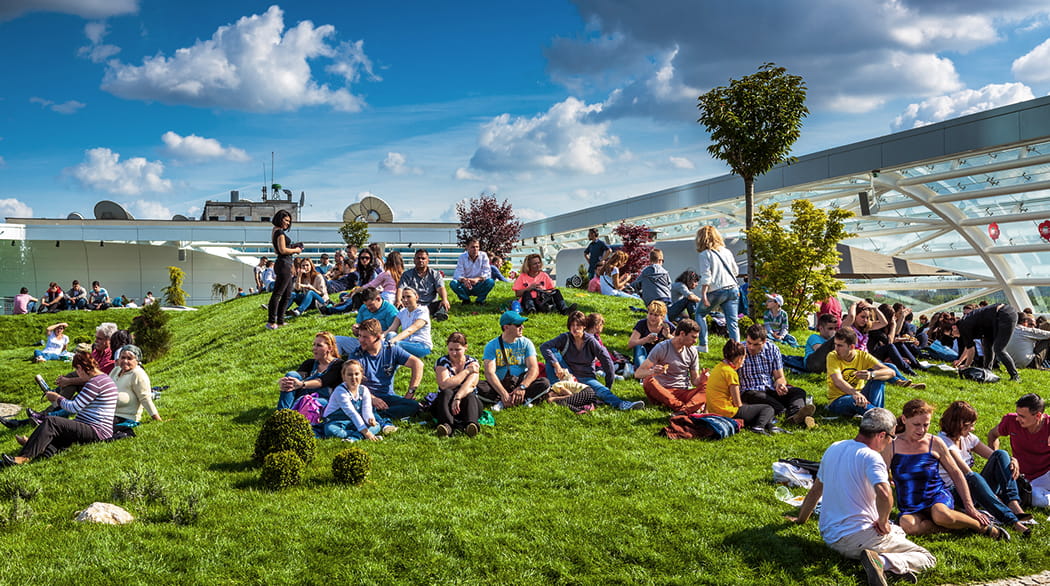
The Future of Smart Cities
A smart city provides residents with a comfortable life while minimizing the city’s environmental load. Smart city development is now going forward worldwide in nearly 2,000 urban areas.*1 With forecasts suggesting that by the year 2050, nearly 70% of the world’s population will be living in cities with a population of over 10 million, it is expected that smart city market size will reach 1.5 trillion dollars by 2020.*2 Smart cities: this is the direction of a sustainable society in which the world is moving.
Different kinds of smart cities are taking shape around the world. Smart city plans include the use of renewable energy and the optimization of energy usage. Smart cities also incorporate the construction of environmentally-sensitive and safe transportation systems, medical IT and digital health records, water and waste recycling infrastructure, along with other strategies. These approaches are tailored to meet the unique characteristics of each region.
For example, a city in Japan has launched a number of “smart mobility” low-carbon society demonstration projects such as electric vehicle car-sharing. Significant reductions in the environmental load can be achieved by shifting from individual ownership of things like cars and other tools of daily life to a focus on using these things only when they’re actually needed. In a city in Florida, residents and medical professionals are sharing information about, body weight, blood pressure, blood sugar levels, exercise, and prescription histories with the objective of creating smart healthcare systems to maintain residents’ health and support the treatment of disease. Over in Europe, smart utility meters are being installed throughout the region. Sensors and monitors can be used to track energy usage and to forecast demand. This information is used to promote more efficient energy usage and to reduce carbon dioxide emissions across Europe.

Challenges associated with the creation of smart cities
Smart cities have to become more than places where only a few special people live. They have to be places for people in all their diversity – young and old, women and men – places to live and work in comfort and security. To achieve that goal, industry, government, and universities are collaborating to develop technologies that lower living costs. Work is going forward to develop new industries and create employment. At the same time, it is essential to protect individual privacy, to promote universal design, to develop disaster prevention systems and so on to ensure the safety and security of city residents.
While smart technologies are making inroads into many aspects of daily life, important progress is also being made in bringing smart technologies into the industrial sector. It is now possible to build cities that have thriving manufacturing industries that benefit from optimizing the balance between energy supply and demand both in factories and in the daily lives of city residents. Truly energy-efficient communities can be created by optimizing this balance between power production and use. As diversity of smart city concepts continues to take shape, there are many exciting opportunities for the IA industry to work toward the creation of more sustainable societies in the development of smart cities.
References
*1 Japan Research Institute study
*2 Frost & Sullivan study

